Small disclaimer: As in-line with my luck, a cold front rolled into the region, so most of this isn't going to be nearly as spectacular or thought provoking as I intended it to be.
The problem is rather simple, yet complex. I park my car for upwards of eight hours a day in the direct sun provided by Colorado summers. While I use a sunshade, the ambient temperature in the car manages to be pretty high by the time I get back to my car in the evening.
While a nice break from the heat, really not helping here.
This isn't too bad for me, but it's not my dog's favorite thing in the world. You're probably thinking, "Why not leave the windows down?" SparkFun is surrounded by fields full of bugs and dust. Add this to the out-of-nowhere rainstorms, and it's just easier in the long run to keep the windows up. So with the addition of our new, flexible solar cells, I've been thinking that it would be worth trying out a system where the hot air is expelled, and fresh, cooler air is introduced.
There are plenty of ready-made products that set out to accomplish the same thing. However, some YouTube searching will show consumer report after consumer report finding that these do not make a difference. My theory is that since these devices only move air out and do not replace it, the air replacing the displaced air is coming from the climate control system, which when parked and off can only provide warm air. By adding a fan that introduces air from outside the car, my hope is that it will provide somewhat cooler air. It's a long shot that it will work, but why not give it a try?
It seems my novelty thermometer is pretty accurate as well.
The first aspect I needed to figure out is where it would be mounted. Luckily, my fancy 2007 car has a sunroof. By mounting it on the sunroof, it provides a central location at around the highest point of the cabin. In addition, it provides a good spot for the solar array to rest. The bad side of this is that the fan introducing new, cooler air will be pulling from the area right over where the sun will be baking, which could potentially end up just introducing more hot air.
With a lot of potential unknowns, I decided to take advantage of working on top of the SparkFun warehouse and start testing things out. Due to the price of the flexible solar panel I'm using, I want to keep the BOM as small as possible. Plus, there's no reason for this to be incredibly intricate. Yes, I can add a battery and an MPPT tracker to keep the power to the fans constant, but I have serious doubts whether that extra amount of air movement would justify the additional parts.
The original test is set up with two fans connected with alligator clip leads to the panel mentioned above. Following some of the best advice I've ever gotten, I start simple, with the fans mounted on a piece of cardboard. Unfortunately the fans I'm using aren't the best fit, but there are ways to fix this should I see the evidence needed to move forward.
Not my greatest work, but it got the job done.
Today was a bit on the cool side, but the sun was completely unobstructed this afternoon. I took a reading from one of the hot days late last week, which was around 120 Fahrenheit with the sunroof open. Today started off a bit cooler, but with the sun out now, it's climbing fast. I took another baseline reading with the sunroof open and it measured 95 degrees Fahrenheit. After setting up the fans, I could immediately feel the hot air being expelled from the one fan. The other, which has the task of moving cooler air into the cabin, was a bit less successful due to the angle of the fans (I should have used smaller fans). At this point I wasn't sure if this was going to work. I was a bit upset as my first reading 30 minutes in had climbed to around 110 Fahrenheit. However, since then it has seemed to stabilize and hold between 105-108 degrees Fahrenheit despite the temperature continuing to climb.
So while this seems to be pretty successful in holding the temperature below what it would normally climb to, it seems the effects thus far have been marginal. I didn't expect anything substantial, but was hoping for more, mainly due to my next dilemma: does opening the windows when I start the car negate the work done here? The test this afternoon found the temperature dropped about 10 degrees within the first five minutes of the windows being down while sitting in the parking lot. I forgot to take a reading for this situation when I measured the temperatures without the fans, but would imagine a similar case. One aspect that did catch me off guard was the air coming through the vents seemed much cooler then normal.
This leads me to my ask from you guys: What do you think? How would you proceed with this? Is the difference worth exploring if a next increment in the design process could yield better results? Is there a different path you might have taken? Or do you feel I'm on a fool's errand?
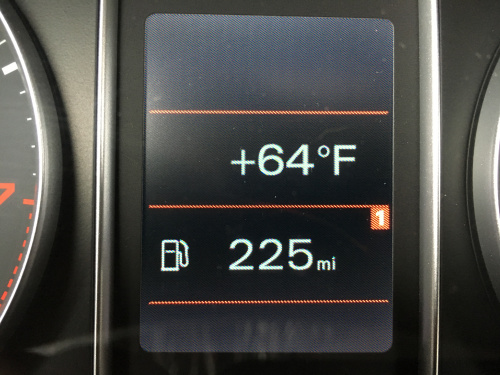
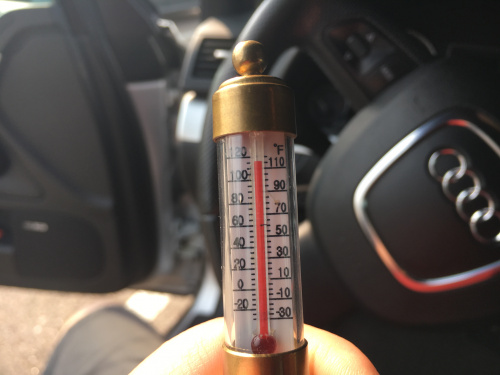







I have one of these: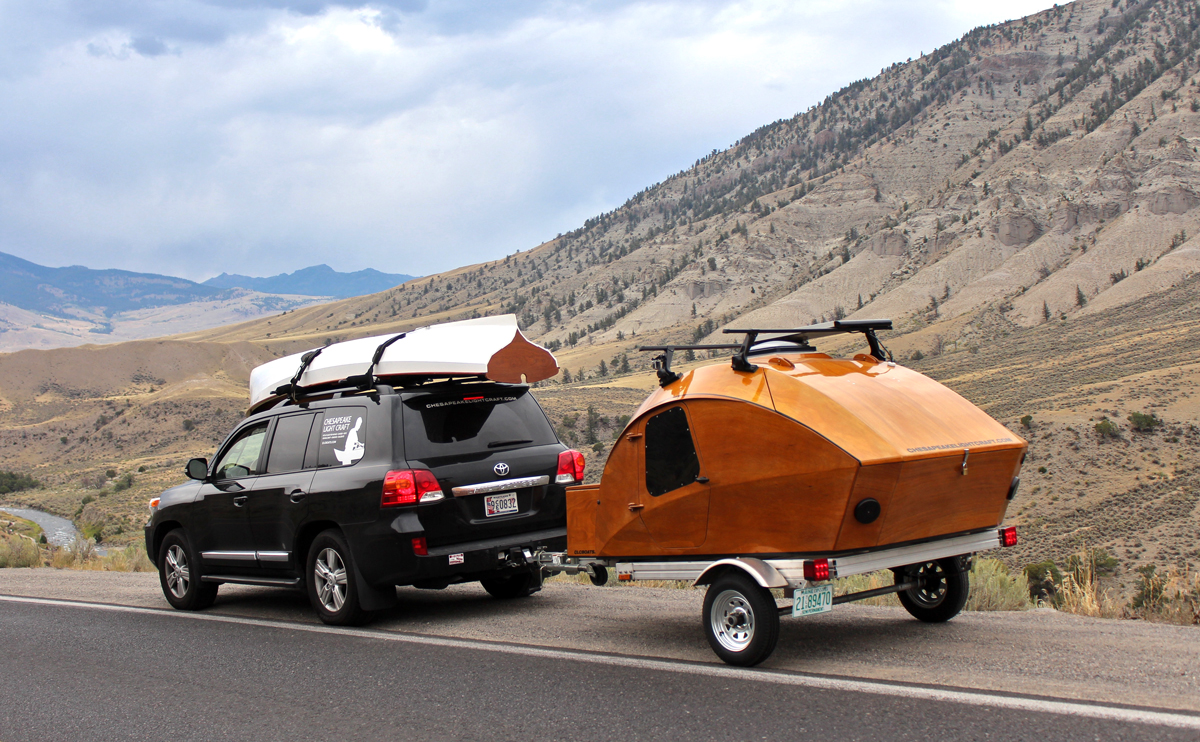
It has 4 of these which let air in from the sides without letting vermin and rain in, too.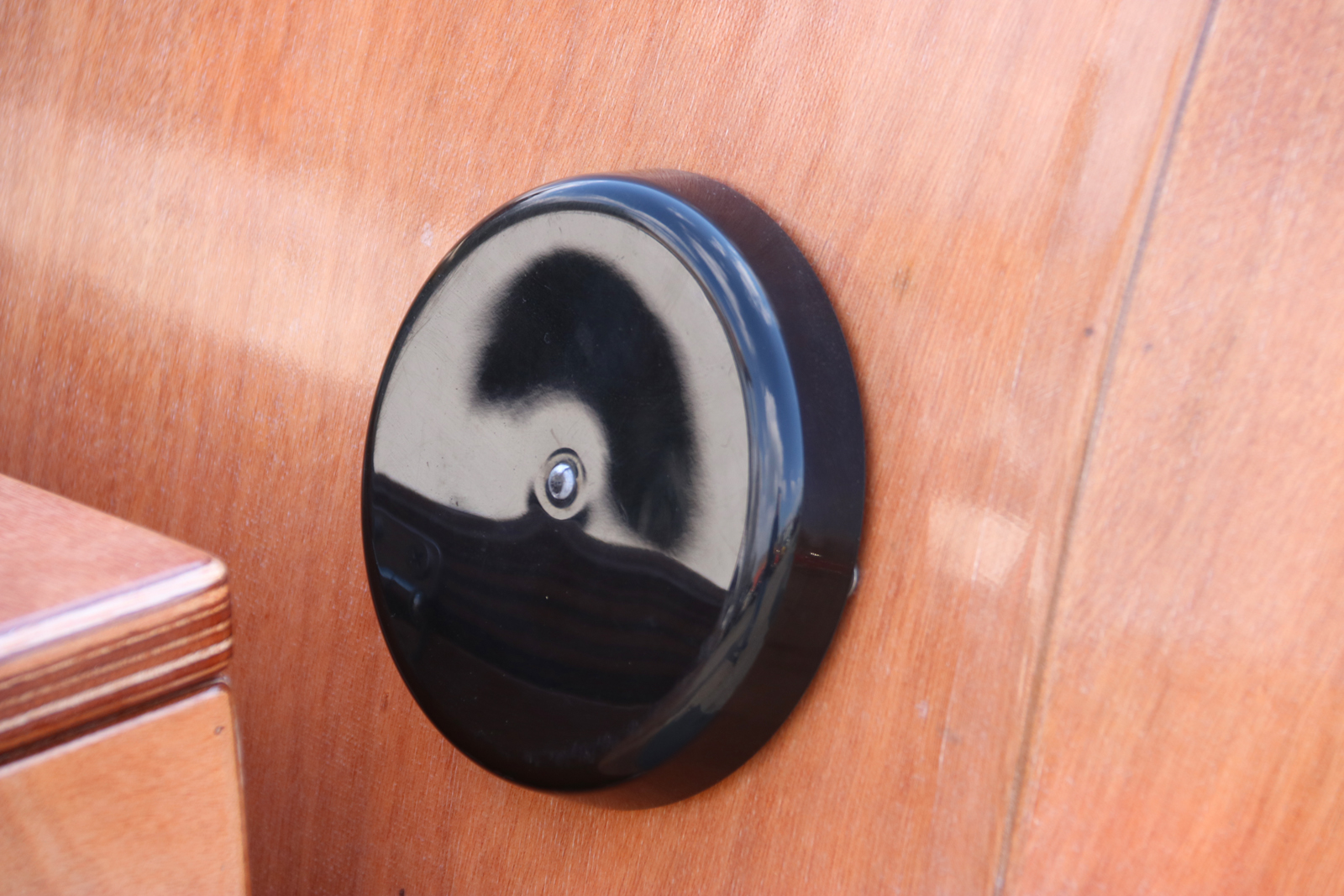
It also has one of these on top to let the air flow out or get sucked in/out if you turn on the fan. It has a lid to keep out rain and a screen to keep out bugs.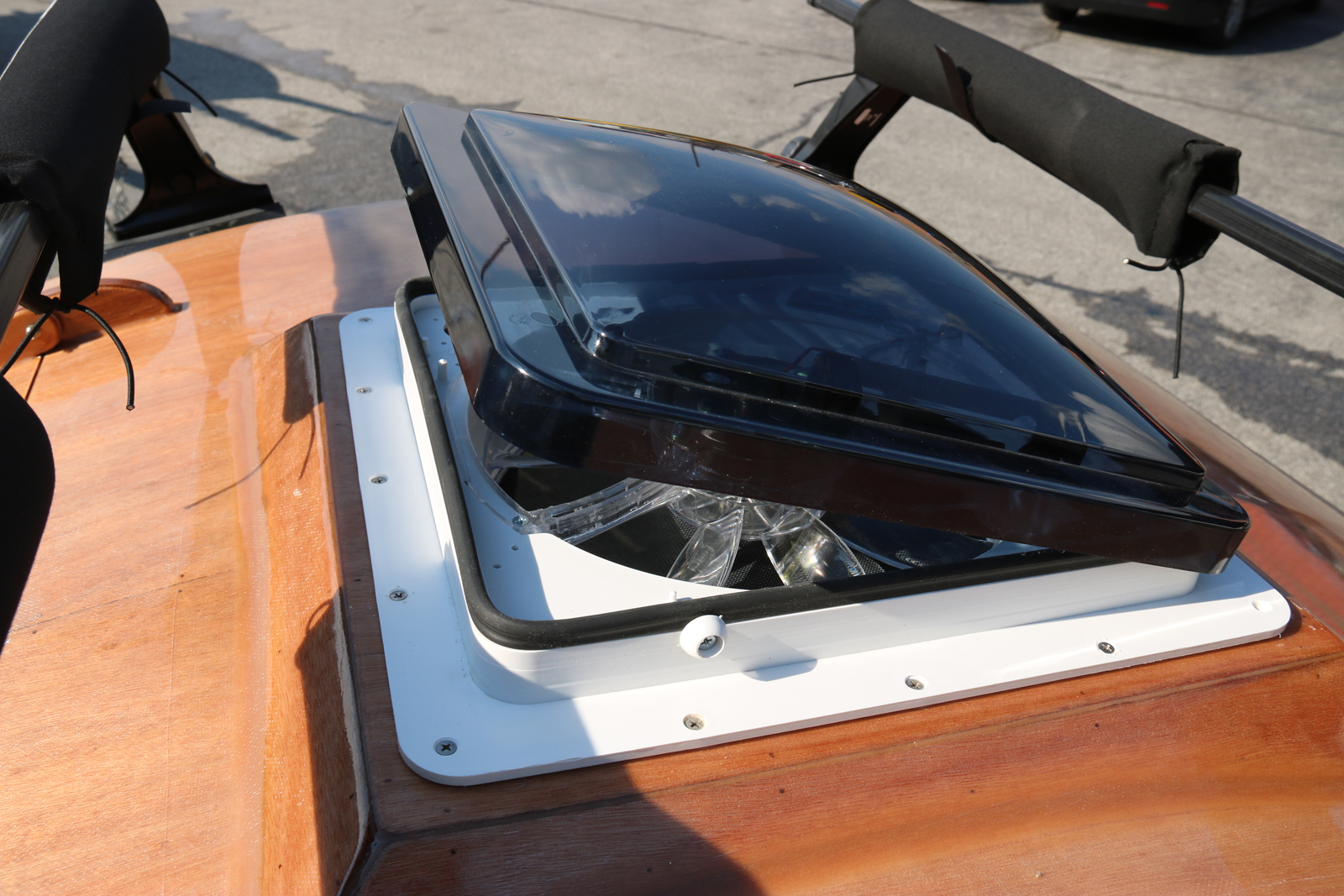
It's powered by a 12-volt battery which is recharged by a power cord or a pair of these if you want to be cordless. I got 2 100-watt solar cells and a regulator for $200.
If you'd like, I can do some tests to compare temperatures when everything is closed, when the vents are open and when the vents are open with the fans on.
In Phoenix we hit 120 outside the car, I don't even want to know what the inside is at! My solution has been to crack both front windows 1/2", place a fold-able windshield cover mounted on the dash, and since the right side of the car has the Western sun pointing at it, I have a large beach towel that covers the right side of the car. It's mounted on the outside with magnets. Since the sun can't shine in through those windows, it makes a big difference later afternoon when I get in it to drive home. Yes it's not a high tech solution, sorry.
I imagine you are aware of 12V roof vent fans available for RVs and camping trailers. They do a decent job of keeping temperatures tolerable, have screens to keep out bugs and stand up to normal driving speeds. For example the FanTastic Ceiling Fan Vent has a thermostat and rain sensor for automatic dome open/close. Uses 3 amps on high, so you only deplete your battery by a max of 30 amps in a 10 hr workday, which probably can be recovered on your commute.
Yea, I'm trying for something really temporary, but the thought did cross my mind.
RE: Smaller fans: More smaller fans does not mean better air flow. Means more noise, at a higher frequency. It's why people who build computer rigs use larger fans inside of their rigs, because they are looking for quite. Sure you think you are going to be using this while your not in your car, but I bet you will want to use it when you are camping or something like that.
Here is the other thing: That one little solar panel, is going to be too small for what you want to do. You are going to need something that will generate 100W (~17.5 V @ 5.7 A) -150W+ (maybe your going to need two 150W panels or more), and both a buck-boost converter that can handle the 200W power, to get the power output at the voltage and total amperage your fans will need to operate (this is a MAJOR sticking factor if things will work or not). You might want to even come up with a short term storage device for when there is too much power like a super cap to make up when you don't have enough sun. Another thought you might want this supper cap to work at a higher voltage off the solar panels and run that through the buck-boost converter, then what the fans operate at, that way you're not trying to play with high currents on the fan side of things.
Last: Get rid of things that can go really wrong.
Get rid of the paper cardboard. Moisture will kill cardboard eventually, and you will have a mess on your hands. I thought SF had some type of Plexiglass laser cutter. Cad a design that can handle your fans, and cut some plexiglass to hold those fans. It will save you some times and a wet mush.
Set up your connections so they will not short out or come in contact with the metal of your car. Trust me, you play with 200 Watts and things short, it's not going to be fun driving with the blue smoke smell in your car, and burn wires.
Yup, that was definitely a quick, dirty prototype. Moving forward I'll definitely use something more permanent.
Older cars with physical climate-control levers that pull cables to move flaps tended to have a vent setting that left intake open from somewhere to the cabin vents. I've often wondered how much cooling could be accomplished via convection by leaving the sunroof open and the climate control on the vent setting; and then how much more would be added with sunroof exhaust fans.
I agree with all the other commenters that intake will be crucial.
Maybe a Hilsch tube between fan and car could offer a little cooling.
You might consider adding a venturi to the intake fan. As mentioned in a previous comment you'd also could get a significant benefit from preventing the solar gain to begin with. Consider covering all the glass with a reflective material.
I would look at 3D printing a frame to mount the fans on that you could use a door window to clamp in place. Leave the sunroof open to vent the hot air, and have the fans push cooler air in. You could eventually add a shroud to the fans to keep the rain out.
Had a black full size Chevy van with a small(less than sq ft) vent. Amazed me how much cooler it made the van in the middle of summer. Guessing like 10-20 degrees. Never measured it. The vent had a screen in so rain was only problem. Even then I'd usually leave it open a half inch. Always wanted to put a fan in it but no way to sense rain back then so never did.
Rather surprised the talk is only about air temperature. The sun heats the interior of the vehicle that in turn heats the air. The interior will continue to heat the air a long time after you get in. My A/C seems a bit week so it probably takes like 15 minutes to overcome it. The heat in the seat you're sitting in goes directly into your body and no air gets between. Not to mention how much fun it is to grab a hot steering wheel.
Maybe adding tracking to the panel would be overkill but setting it to get max amount power at the right time to keep air flow cooling the interior would be worthwhile.
Instead of fans and solar panels and controllers and stuff, I'd let Mother Nature do the work for me with a semi-passive convection system. Hot air rises, so a set of vents at the bottom of the car and vents at the top would allow the hot air to rise out the top vent and the cooler air to be drawn in from the presumably shaded area under the car. By using those bimetallic vents that open when it's hot and close when it's cool, no power or control needs to be applied.
Of course, there'll have to be some clever design to keep out water, car thieves and vermin, but the solar-powered fans need that, too.
If one must use a solar panel, instead of a $90 3-watt panel, I'd use a $50 50-watt panel. That's 17x as much power for about 1/2 price. That'll get your fans really turning.
I like the idea of no regulator, provided the fans can handle it. It much simplifies the system.
I suggest starting with the physics of this problem. Dry air is a notoriously bad heat transfer medium and it is even worse at high altitude. It may be that the amount of air you need to move is just not feasible with a small solar array and small fans. Consider that the incoming air from a blacktop parking lot is likely to be in the 90s at best, and that the solar power falling on the car is in the range of 800 plus Watts per square meter. I'm guessing you are talking hundreds of cubic feet per minute needed to make a significant difference. An evaporative cooling mechanism might require much less airflow.
Update: So I got curious and did a little research. A cubic meter of air under the conditions of this problem requires about 1300 Joules to raise its temperature one degree C (A Joule is one Watt for one second). I looked at a few fans in the 200 ma @ 12 volt power range and one cubic meter per minute is a reasonable airflow. This means that such a fan could remove roughly 22 watts for each degree (C) of temperature rise. If the incoming air is 90 F and the outgoing air is 110 F, that is about 11 degrees C and the fan could remove about 245 Watts - not much compared to the 800 or so Watts per square meter of solar power falling on the car.
The hard part of the analysis is figuring out the incoming and outgoing power of the total system. Obviously even without the fans, the temperature of the car is not increasing without bounds. Some surfaces are absorbing energy and other surfaces are losing it through the same three mechanisms: conduction, radiation, and convection. It is the temperature rise above ambient, the very problem you are trying to solve, that is the ultimate driver of the balancing heat loss, and the overall solution requires reducing gain and increasing loss to minimize the temperature increase.
Since the solar array is thin and flexible, and you need some way to mount the fans, and some kind of solar shading / insulation seems to be required, maybe a good solution would be to integrate the fans and solar array into a reflective insulating fabric car cover!
I also vote for doing the math first.
You are going to need a significant amount of air flow to reduce to temp of your car.
If you want to start with an experiment you could wait for your car to get hot and then start it, crack the sunroof, and run the built-in fan on full. See what effect that has on the temp over time. Then you could get an idea of the power and air flow requirements.
I believe this is actually a challenging project. My guess--based on work that I've done trying to cool my bedroom with fans and an Arduino--is that you likely undersized your fans and power requirements by an order of magnitude. But that's easy to fix.
The hard part is that the requirements to keep out rain and insects and dust, locate the fans on opposite sides of the car, not damage your car, make it removable, keep the costs low, keep the complexity low, etc., etc. are challenging.
Some of the other replies mentioned passive methods of keeping the car cool that are proven effective. But if you just want to tinker go for it!
The comment about using a datalogger is a good plan. You should also have a sensor outside the car, in the shade (probably under the car is your best bet). I did some similar testing when I got my van. It's got solar panels on top and a vent fan in the ceiling, but I wanted to be completely sure it would be safe to leave my dogs in it on camping trips when my wife and I went someplace like a museum or shopping. With reflective covers on the windshield and side windows, and curtains on the other windows and the fan blowing, the temperature only got a degree or two above ambient. But without a measurement outside to tell me the ambient temp, I really wouldn't have known how effective it really was.
Seems to me Audi did this 20+ years ago, had solar panels on the sun roof and the solar cells could be used to run the standard fan in the car when parked and not run the battery down.
Also solar vents are a standard marine item, some have reversible fans so you can push air into the boat at one end and out at the other end
Yup, I remember those. They actually discontinued the feature due to it prematurely wearing out the fans.
First of all, I've always had a strange love for fans (I don't know why) so your project intrigued me from the start. I would guess the reason you didn't see much success is because you aren't able to get any good airflow going. I've noticed in my car if I I crack the sunroof and the windows, it makes a huge difference on hot and sunny days. But in that case, the hot air rises out of the sunroof and cooler air is pulled in from the windows. This causes airflow throughout a good portion of the car so it stays cooler.
In your case, cool air is pushed in and pulled out from a smaller area, and there's not much room for mixing. I'd say to improve your system, mount the intake fan to a window and then keep the output fan where it is. Better yet, if we making custom mounts anyway, put your two fans as intakes and build a shield for your sunroof to allow you to crack it open without letting in bugs or rain. This will both double your airflow and increase the area over which the air is actually flowing.
Of course then you've gone to all this trouble of an expensive solar cell, wires all over your car, three custom window panels.... and you'll probably reach the same conclusion that it only really makes a difference for the first 10 seconds or so that you are in your car.
At least for the moment, I'm not going to get involved with the discussion of exactly where the vents/intakes should be, but I am going to suggest that it would be a good place to have a simple datalogging system. At a minimum, say, automatically record the temperature. Some sort of light level sensor would be interesting as well given that you're trying to be solar powered. (Unlike another poster, who says "IANAE", I am an engineer -- OK, a retired, or maybe "recovering", one, since it is addictive -- and I'd also be inclined to record the voltage across the solar panels, but that is going to add a lot of complexity for you.)
This comes around to my "pet peeve" about so many of the SBCs (Single Board Computers) aimed at the hobbyist market -- that a RTCC (Real Time Clock Calendar) is not standard equipment, despite the fact that many (though not all) if the CPU chips in the class used on them have RTCCs that can easily be used. The Teensy 3.5 is one of the few exceptions, though you'll also have to provide a battery backup for that RTCC, but it also has a uSD card which would be a good way to record readings. There are plenty of temperature sensors, and light sensors, available that will be compatible.
One of the neat things about having something like this running is that you don't have to remember to note the temperature -- it'll do it for you, as well as letting you see what's happening during the day. You might want to jot down which day you tried which configuration, for future reference when looking at the data.
Thermal layers and air currents...You might try borrowing a Halloween fog machine and inject the 'fog' (stage smoke) into your intake fan to see how the air is flowing.
I would not be surprised if the intake fan is mixing up the hot vehicle air with the cooler intake air, which is giving the "Stabilized", yet still high temperature.
As I see it the hottest air needs to be at the top, and the cooler air at the bottom. Perhaps a flexible dryer-type hose on the inside of the car for the intake fan to push air down to the floor? This would then only give the exhaust fan hot air to remove. At least in my mind. YMMV IANAE (I am not an engineer)
Given that you are located near the front range with its changing weather, a side window design would seem a better choice. When faced with the same issue on my 997 in California, I opted for a green house cover (green house being the windows and roof of the car) from North American Car Cover, it also gives my hartz cloth convertible top protection from bird and tree droppings.